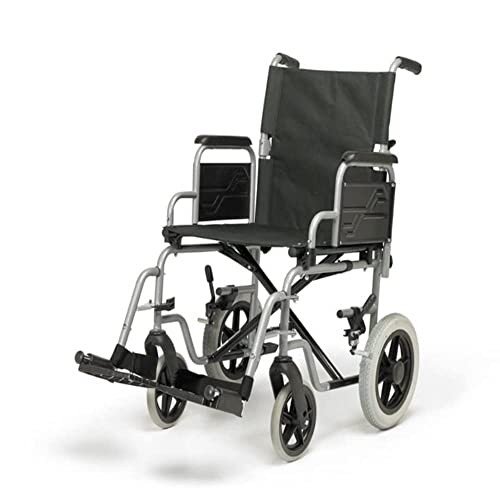
Navigating the World of Mobility Scooters: A Comprehensive Guide
In an age where mobility is significantly acknowledged as a basic aspect of lifestyle, the demand for assistive gadgets has actually surged. Among these, mobility scooters stand out as a flexible and empowering option for people with mobility obstacles. This extensive guide explores the world of new mobility scooters scooters, offering insights into their types, benefits, purchasing considerations, and upkeep ideas.
Understanding Mobility Scooters
Mobility scooters are motorized cars created to assist individuals with mobility problems in walking around more freely and individually. They are particularly helpful for those who discover walking challenging due to conditions such as arthritis, numerous sclerosis, or post-surgical recovery. Unlike manual wheelchairs, mobility scooters need minimal physical effort, making them an excellent choice for extended use.
Types of Mobility Scooters
Three-Wheel Scooters
- Pros: More maneuverable, lighter, and simpler to save.
- Cons: Less stable on rough surface.
- Best For: Indoor and smooth outside surface areas.
Four-Wheel Scooters
- Pros: More stable, much better on rough surface, and can bring much heavier loads.
- Cons: Bulkier and less maneuverable.
- Best For: Outdoor use, particularly in parks and on irregular surfaces.
Portable Scooters
- Pros: Lightweight, collapsible, and easy to transport.
- Cons: Limited variety and speed.
- Best For: Travel and occasional use.
Durable Scooters
- Pros: Built to handle much heavier users and rugged environments.
- Cons: More expensive and less portable.
- Best For: Users over 300 pounds or those who need to navigate rough terrain.
Standing Scooters
- Pros: Provide a standing position, which can be advantageous for users who can not sit for extended periods.
- Cons: Limited stability and variety.
- Best For: Users who choose standing and need short-distance help.
Benefits of Mobility Scooters
Enhanced Independence
- Mobility scooters allow users to travel longer ranges without fatigue, allowing them to take part more completely in daily activities and gatherings.
Improved Safety
- With functions like seat belts, anti-tip wheels, and brake systems, mobility scooters use a safer alternative to manual wheelchairs and strolling aids.
Convenience and Support
- Adjustable seats, backrests, and armrests make sure a comfortable trip, minimizing the pressure on the user's body.
Cost-Effective
- While the initial investment can be considerable, mobility scooter near me scooters are frequently more cost-effective in the long run compared to frequent taxi trips or specialized transport services.
Social Inclusion
- Mobility scooters facilitate higher social interaction by enabling users to participate in community activities and maintain a more active lifestyle.
Aspects to Consider When Buying a Mobility Scooter
User Needs and Abilities
- Evaluate the user's physical condition, mobility requirements, and everyday activities to identify the most suitable kind of scooter.
Size and Weight Capacity
- Ensure the scooter can accommodate the user's size and weight easily and securely.
Variety and Speed
- Consider the normal range and speed needed for day-to-day use. Some scooters have a series of approximately 30 miles on a single charge.
Portability
- If travel is a priority, go with a portable scooter that can be quickly disassembled and transported.
Upkeep and Support
- Choose a credible maker that uses reliable client service and upkeep assistance.
Budget
- Set a budget plan and check out choices that use the best worth for cash. Consider financing alternatives and prospective insurance coverage.
Upkeep Tips for Mobility Scooters
Regular Cleaning
- Clean the scooter regularly to prevent dirt and debris from affecting its efficiency. Utilize a soft cloth and moderate cleaning agent.
Battery Maintenance
- Follow the manufacturer's guidelines for battery charging and maintenance. Regularly examine the battery level and avoid deep discharges.
Tire Inspection
- Examine the tires for wear and correct inflation. Replace or fix as required to ensure a smooth and safe ride.
Lubrication
- Lube moving parts such as the chain and gears to minimize friction and prevent wear.
Expert Servicing
- Arrange regular expert maintenance to deal with any concerns and guarantee the scooter remains in ideal condition.
FAQs About Mobility Scooters
Are mobility scooters covered by insurance?
- Some insurance strategies, including Medicare, may cover the cost of mobility scooter to buy near me scooters under certain conditions. Contact your company for particular details.
Can I utilize a mobility scooter for sale cheap scooter inside?
- Yes, numerous mobility scooters are created for both indoor and outside use. Guarantee the scooter appropriates for the kind of surface areas you will be navigating.
How quick can mobility scooters go?
- The speed differs by design, but the majority of mobility scooters have an optimal speed of 4 to 8 miles per hour.
Do I require a license to operate a mobility scooter?

- In most countries, a license is not required to operate a mobility scooter. However, it is necessary to follow regional policies and traffic laws.
Can I take a trip with a mobility scooter?
- Many mobility scooters are designed to be portable and can be dismantled for travel. Check with airlines and transportation service providers for particular requirements.
Mobility scooters are a transformative tool for people with mobility obstacles, using a blend of independence, security, and convenience. By understanding the various kinds of scooters, considering key buying elements, and following maintenance best practices, users can maximize their mobility scooter and lead a more active and fulfilling life. Whether for day-to-day commutes or leisurely getaways, a well-chosen mobility scooter can be an important companion on the journey to improved mobility and quality of life.







